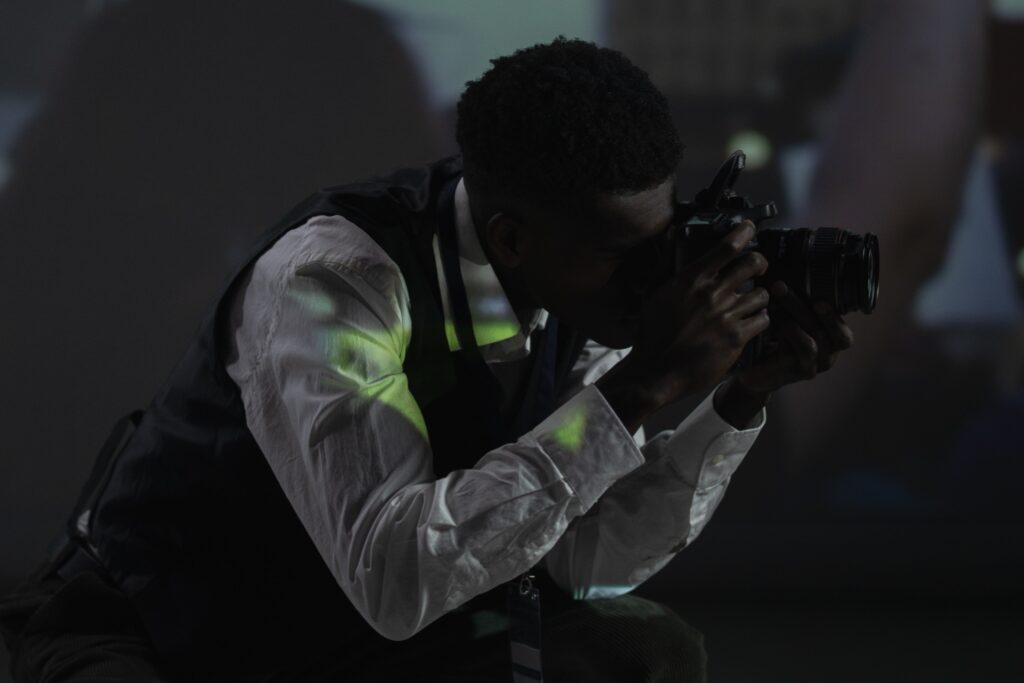Photography plays a crucial and multifaceted role in the field of executive protection, encompassing a range of applications that contribute to the development of threat assessments, security plans, real-time surveillance, incident documentation, and training. The use of photography as a visual tool enables executive protection professionals to identify vulnerabilities, monitor potential threats, gather evidence, and improve their overall protective strategies. One of the key applications of photography in executive protection is the identification and monitoring of individuals who may pose a threat to the client.
By capturing and organizing photographs to create a database of known threats, suspicious individuals, or persons of interest, professionals can maintain situational awareness and take proactive measures. This visual information can be shared with security teams, law enforcement agencies, or other relevant stakeholders, facilitating coordinated efforts and enhancing overall security measures.
In the realm of digital security, photography has extended its utility. With the increasing prevalence of cyber threats, executive protection professionals need to understand potential digital vulnerabilities and risks. Photography can be employed to capture screenshots or visual evidence of suspicious online activities, unauthorized access attempts, or breaches. These photographs serve as crucial evidence in forensic investigations or legal proceedings related to cyber threats, contributing to the overall protection of clients and the mitigation of digital risks.
Beyond these specific applications, photography offers additional benefits to executive protection professionals in various aspects of their work. The field of executive protection involves ensuring the safety and security of high-profile individuals such as politicians, celebrities, corporate executives, and dignitaries. Photography can play a vital role in documenting security details, identifying potential threats, and providing evidence in case of incidents or breaches. By visually documenting security arrangements, such as the layout of venues, entrances and exits, and emergency evacuation plans, professionals can better understand the physical environment and potential vulnerabilities. This information enables them to develop comprehensive security plans that address specific risks and enhance the safety of their clients.

Photography also serves as a valuable tool for pre-planning and risk assessment. By capturing images of the locations where their clients will be present, executive protection professionals can identify potential vulnerabilities or security gaps. These photographs can be thoroughly analyzed to identify weak points in physical security measures, such as inadequate lighting, blind spots, or insufficient barriers. By recognizing and addressing these weaknesses, professionals can develop strategies to mitigate risks and enhance overall security measures, ensuring a higher level of protection for their clients.
During protection operations, photography enables real-time surveillance and situational awareness. By utilizing cameras with zoom capabilities, executive protection professionals can closely monitor individuals or activities from a safe distance, maintaining a proactive approach to security. These photographs aid in identifying suspicious behavior, assessing crowd dynamics, and detecting potential threats that may pose a risk to their clients. The ability to capture images discreetly and in real-time provides valuable visual information that supports decision-making and enables professionals to respond swiftly and effectively to emerging security situations.
In unfortunate incidents or breaches, photographs serve as invaluable evidence. Executive protection professionals can quickly capture images of the scene, documenting the aftermath and preserving the context of the incident. These photographs provide visual documentation that supports investigations, legal proceedings, insurance claims, or internal reviews. By capturing and preserving crucial evidence through photography, professionals contribute to the resolution of incidents and help prevent future security breaches.
Moreover, photography plays a vital role in the training of executive protection professionals. Case studies can be illustrated through photographs, showcasing effective security measures, or highlighting potential vulnerabilities. Analyzing photographs from past incidents or security breaches allows professionals to learn from experience and continuously improve their protective strategies. By studying visual evidence and understanding the context and dynamics of previous incidents, professionals can develop a comprehensive understanding of security risks and apply this knowledge to future situations, enhancing their ability to protect their clients effectively.
Photography plays a crucial role in the field of executive protection, offering numerous benefits to professionals in various aspects of their work. From pre-planning and risk assessment to real-time surveillance, incident documentation, and training, the use of photography enhances the capabilities of executive protection professionals and contributes to ensuring the safety and security of their clients.
By harnessing the power of photography as a visual tool, these professionals are able to gather essential information, identify vulnerabilities, monitor potential threats, gather evidence, and continually refine their protective strategies. In essence, photography serves as an invaluable investigative tool for executive protection professionals, enabling them to carry out their duties with thoroughness and effectiveness.





